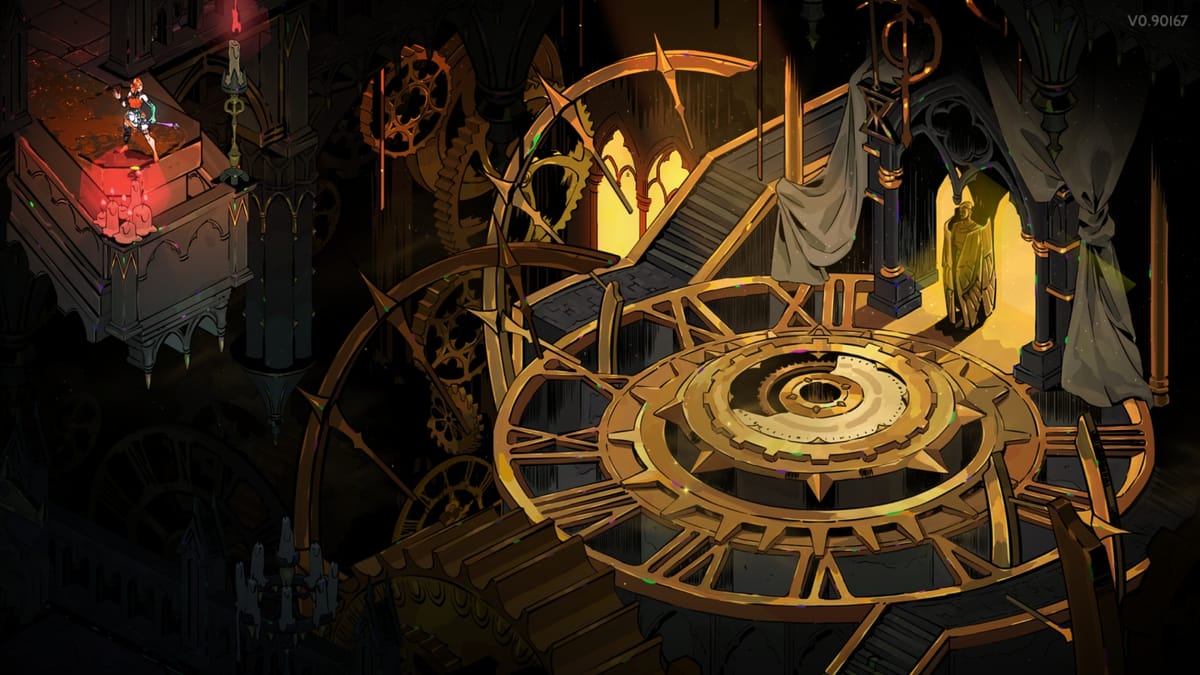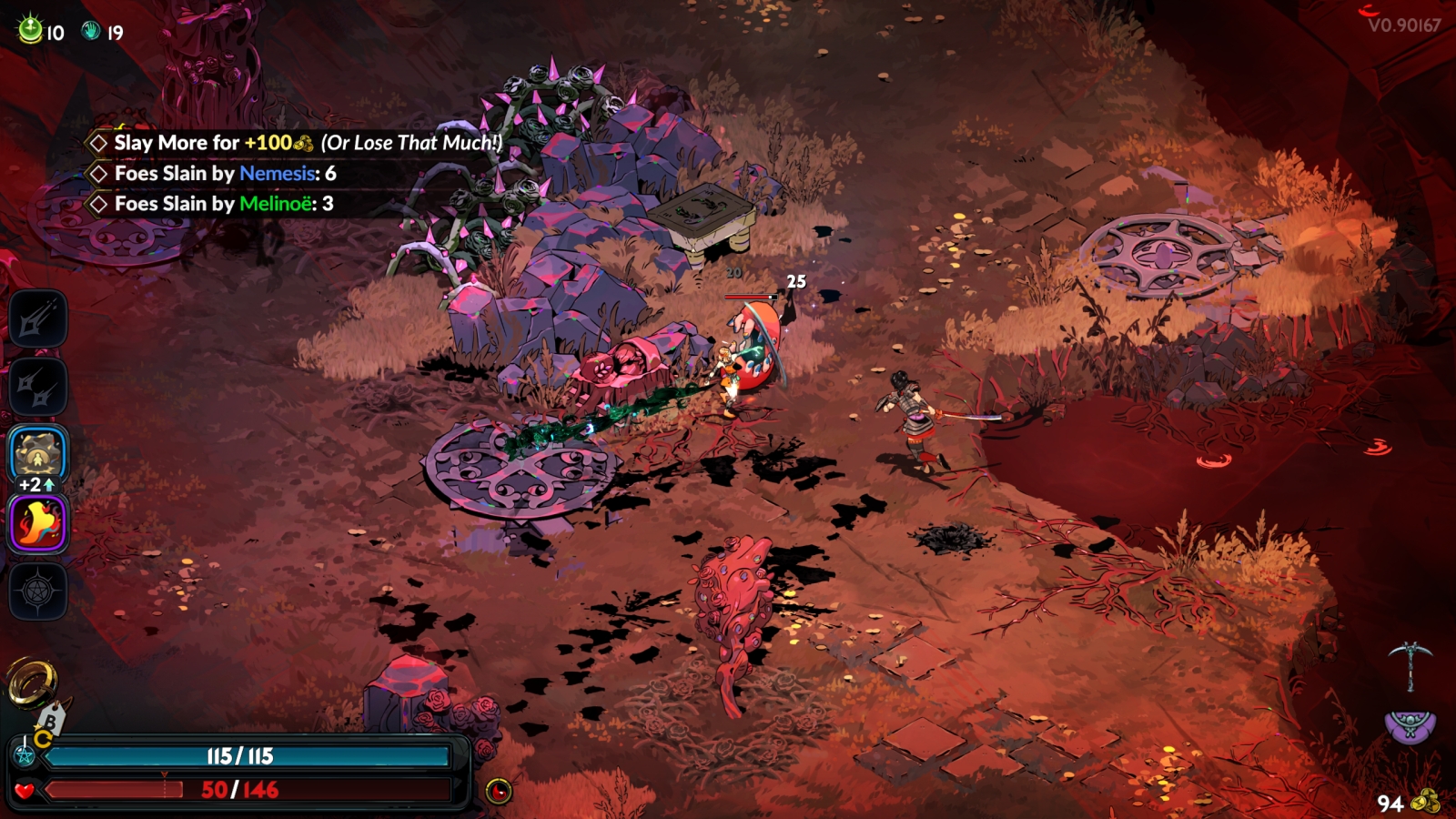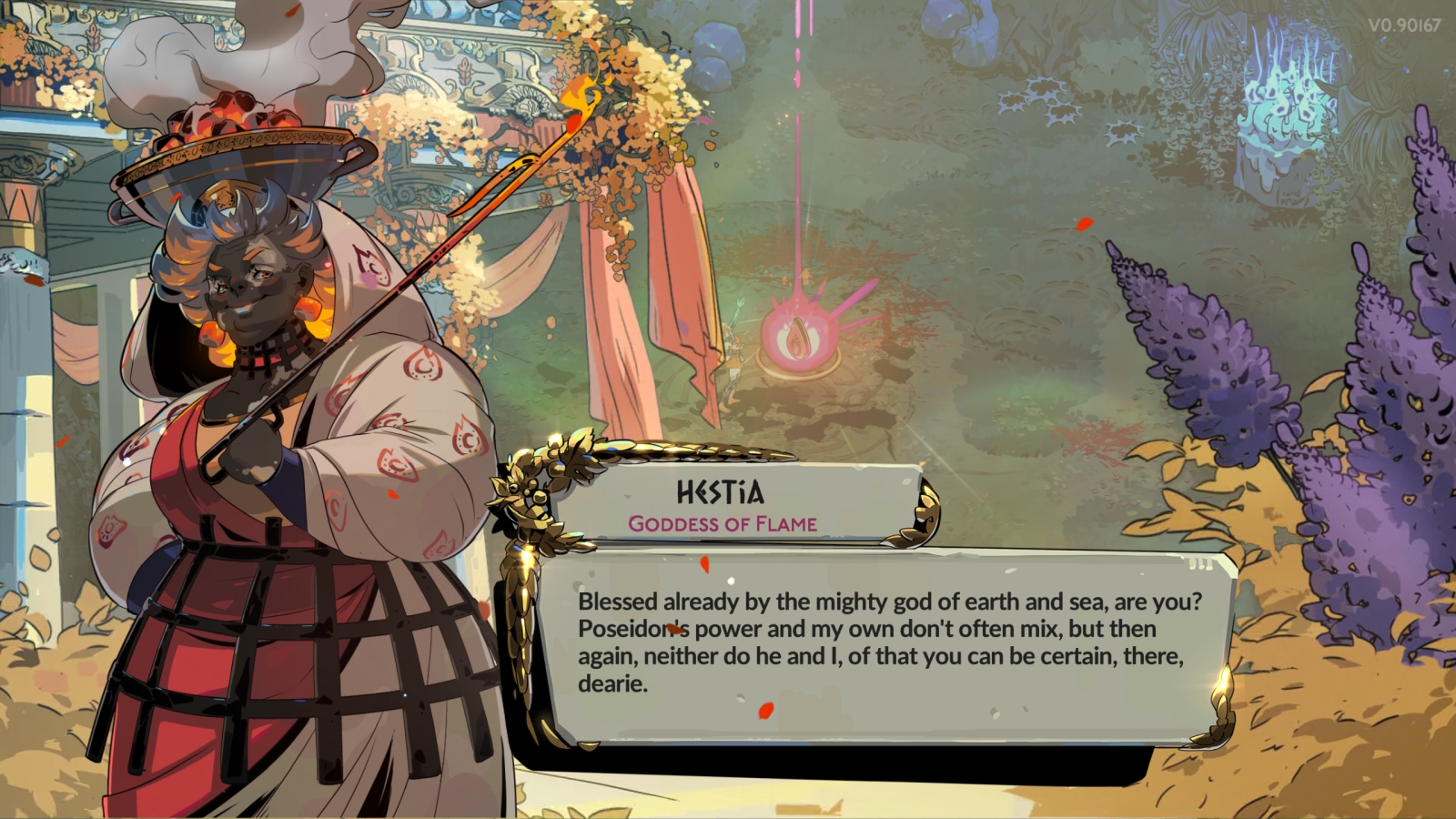
There’s something magical about seeing a game come together over time. While the best way to experience that is to make one yourself, the second best way is to play an incredibly polished game in Early Access. While we got a small taste of Hades II last month, we’ve been playing the Early Access version since then which somehow already feels like a finished game in a lot of ways. Still, there’s more for Supergiant to do and we can’t wait to see it all come together. In the meantime, however, let’s talk about how the game is right now.
For the basics of Hades II, check out our previous preview right here, as we’re going to jump right into things for this one. We had access to five different weapons: the staff, a mid range magical weapon; a dagger and sickle, a close range, rapid melee option; a massive axe, for when you just want to hit things really hard; and a skull which works like lobbing grenades or a basketball at foes, meaning you need to pick up the shells to reload. While quick melee is still my favorite, each weapon has their niche and can really change up your playstyle for a run. I was skeptical about the axe and skull at first, but once I learned how to use them properly they really grew on me. My farthest run to date is actually my first attempt using the skull.
Speaking of, how far can you go in Early Access? Well, you can at least head all the way down to the depths of Tartarus to challenge Chronos, but unfortunately I wasn’t able to beat him in time for this preview. He has a ton of tricks up his sleeves which I’ll leave you to discover, but the way down is also filled with a wealth of surprises. The second area, Oceanus, is on the border between Hades’ and Posidon’s domains, so it’s filled with undead sea creatures for enemies. There’s traps and explosives too, which can hurt you but also be used to defeat your foes. For example, there’s a hermit crab enemy that can duck into its shell and become invincible, but if you lure it in the path of water cannons you can stun it out of that. It can be difficult to properly take advantage of hazards here, but it’s well worth it when you can.
After Oceanus comes the Fields of Mourning, a desolate, oppressive area where shades wallow in eternal torment while Chronos occupies Tartarus. While Asphodel has you moving from room to room earning buffs and boons and Oceanus mixes that up a little by hiding extra routes behind optional encounters, the Fields are completely different from anything that came before. Each room is massive and contains multiple rewards, all of which you need to find to open up the next set of rooms. Before you can pick up each item, however, you need to defeat a few waves of enemies, who hit very hard by this point. There are also optional items you can grab along the way, though these don’t require you to fight any enemies to grab.

Finally, Tartarus is an inversion of the Fields of Mourning’s openness. Its critical path is entirely linear and offers no rewards for clearing an encounter. If you want some last minute upgrades, you need to delay progress and risk even more damage before Chronos by heading into side rooms. The longer you stay in Tartarus, the more enemies will spawn in each encounter as well, so you really need to manage your time here (pun intended).
In my first preview, I mentioned that the game felt a bit too easy. While Asphodel’s difficulty feels perfect now, I think the other three areas are a bit overtuned at the moment. Maybe not Tartarus as much since it’s the final area and should be the biggest challenge, but everything in Oceanus and the Fields just have way too much health. The best example of this I can give is finally whittling down the last enemy in an encounter’s shield, then having to sit there and mash the attack button for a solid 30 seconds to kill them. Given that enemies with no shield stagger when you hit them, I was met with no resistance, just mashing. Oceana’s boss, Scylla and the Sirens, have an amazing song (the whole OST is awesome, but this is a highlight) but is a fight that goes on just a little too long, while the Fields’ boss feels like it lasts forever. That boss in particular has attacks you need to react very quickly and precisely to dodge, and it’s very taxing to keep that up for so long. If I took even a few hits there I knew I wasn’t going to last long against Chronos. I’m fine with the damage you take, but the length of some of these encounters could stand to be shorter and sweeter.

Instead of heading down to confront Chronos, Mel can also head up to the surface to aid Olympus. Just like Zagreus before her, however, she can’t last long above ground and your health will constantly drain in exponentially increasing amounts. This is a much more frantic take on the normal gameplay, being under a soft time limit, and while I haven’t been able to play much of it it’s a ton of fun to rush for what you need before you die. There is a spell you can perform to extend your time on the surface, though it does require materials from above ground to cast. It’s going to take a lot of preparation to even reach Olympus, but supposedly something up there will come in handy in the fight against Chronos.
We’re just entering Early Access now, so I’m sure Supergiant will be constantly adjusting the game’s balance and adding even more features – there were several updates even during our preview period that added stuff like Hestia’s finished artwork (my favorite of the Greek gods). Personally, I’d like to see an expanded training ground with the ability to test out combinations of boons and weapon upgrades you’ve received in a run. Given that Hades II’s boons make much smaller adjustments to your playstyle individually, it’d be nice to be able to experiment in a safe environment. Hades II should enter public Early Access soon after you read this, if it’s not already, so if you’re not saving your experience for the final game it’s already well worth jumping in.
